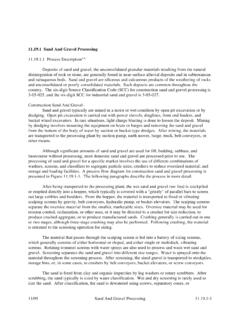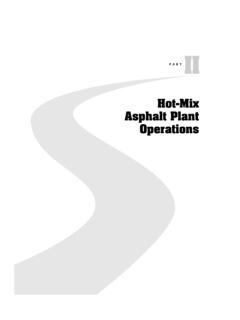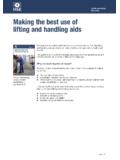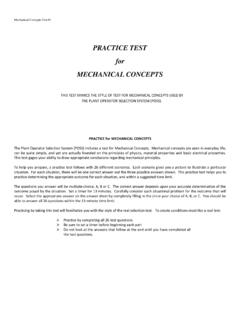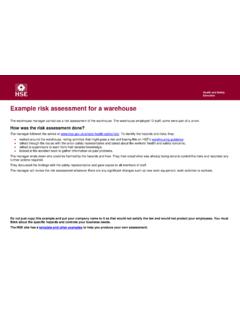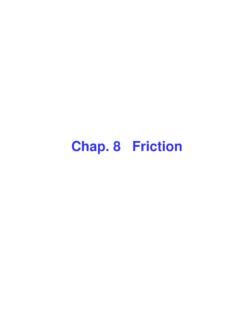Transcription of WATER USE IN
1 WATER USE INTHE PROFESSIONALCAR WASH INDUSTRYA Report for the International Carwash AssociationWritten byChris Brown, WATER Conservation ConsultantPublished byInternational Carwash Association, September 2002 International Carwash Association, Inc., 2002 Executive SummaryThe International Carwash Association has dedicated much of its effort to evaluating theimpact of our industry on the environment. To better educate individuals on theinfluence of professional car washing, we have conducted a series of studies as part ofour strategic plan to provide industry an effort to clarify WATER consumption and WATER conservation measures in professionalcar washes, the International Carwash Association commissioned a study of techniquesused to conserve and reclaim WATER in the car wash industry and to define thosetechniques in a standardized manner.
2 In 1999, the WATER Conservation in theProfessional Car Wash Industry report was published. It described the WATER use andconservation techniques for self-service, in-bay automatic, and conveyor car washes. Theresults of that examination were designed to advance the discussion of WATER usage,conservation and reclaim in the professional car wash year the International Carwash Association has completed a two-year study that isdesigned to assess both WATER usage including the impact of evaporation and carryout,and wastewater quality including solid waste. The principal objective of this study is todetermine the volume difference between fresh WATER consumed and the wastewaterdischarged while quantifying the average WATER consumption per vehicle by professionalcar collected from in-bay automatic car washes, self-service car washes and conveyorcar washes in three different climatic locations were chosen to determine if regionaldifferences in climate had a significant impact on WATER use or WATER losses due todifferences in evaporation and is imperative that our businesses take proactive measures in both quantity and qualityof WATER usage.
3 WATER regulators can use the data to determine relative WATER savings thatcan be successfully implemented by commercial car washes utilizing WATER reclaimsystems. This data also can assist in calculations for sewage rates based upon apercentage of fresh WATER study is made available to all of those in our industry who can benefit from itsconclusions. The International Carwash Association is an industry driven, membershiporganization whose goals include providing for the continued success of all participantsin the car care community. If you have any questions about the contents of this report,please contact the International Carwash Association via the Website, of ContentsI. Study Goals ..2 WATER and and Car Wash Classification and WATER and Site Results and and Conclusions.
4 42 VIII. Tables and Figures ..44 WATER Consumption by Type of CarwashEvaporation and Carryout by Carwash TypeWater Usage by Segment International Carwash Association, Inc. September 20021 INTRODUCTIONThis report was produced for the International Carwash Association (ICA) as part of a consultingagreement to implement a study of car wash WATER use and wastewater quality. The first sectionexamines WATER use and losses due to evaporation and carryout. A second section presentsfindings on wastewater quality and solid main goals of this study were to quantify the average WATER consumption per vehicle washed,as well as to determine the volume difference between the fresh WATER consumed and thewastewater discharged by professional in-bay automatic car washes, self serve car washes, andconveyor car washes.
5 The use of reclaim systems to conserve WATER is also considered. This studyis based upon data gathered in the field as recommended in the International CarwashAssociation s WATER Conservation Study1 which examined WATER use and conservationtechniques in the professional car wash industry. The previous study found WATER use dataavailable primarily from manufacturers specifications and little or no data from field report serves to compile information gathered from the work performed at individual sites inBoston, Massachusetts, Orlando, Florida, and Phoenix, Arizona for comparison and different geographic locations were chosen to determine if regional differences in climatehad a significant impact upon WATER use or WATER losses due to differences in evaporation the need to implement WATER conservation or drought restrictions, regulators can use thedata presented to determine the contribution to WATER use cutbacks that can be successfullyimplemented by professional car washes.
6 It can also assist in WATER rate calculations for sewagerates based upon a percentage of fresh WATER consumed. The information presented can be usedto determine the relative WATER savings found in the study from installing and operating a waterreclaim system. 1 Brown, C., WATER Conservation in the Professional Car Wash Industry, International CarwashAssociation, Data collection was performed by Oak Engineers, Newburyport, Massachusetts for the Bostonand Orlando regions in 2001. Black and Veatch, Phoenix, Arizona collected data on In-bay andSelf-serve sites in the Phoenix area in 2000. Data regarding conveyor washes in the Phoenix areawas collected in 1996, and reported by Jane Ploesser of Phoenix WATER Department.
7 International Carwash Association, Inc. September 20022 STUDY GOALSThe study collected data related to three basic questions: the amount of WATER consumed pervehicle, the WATER loss to evaporation and carryout, and potential WATER saving measuresincluding reclaim. The second section of this report summarizes the results of waste WATER qualityand solid waste consumption. Each one of the study sites was audited for WATER use by cycle and for thetotal gallons used per vehicle for each of the wash types. Numerous previous studies, includingthe WATER Use Conservation in Carwashes study (Brown, 1999), have used consumptionestimates based upon manufacturers specifications. This study compares WATER use by carwashtype and region based upon fieldwork. An earlier study of conveyor carwashes in Phoenix, AZwas performed by Black and Veatch (Kobrick, 1997).
8 Evaporation and Carryout. Data was also collected to determine the amount of WATER lostthrough evaporation and carryout. Carryout includes WATER that leaves the car wash adhering tothe surface of the car, or is blown from the car wash bay by wind. The location, local climate,orientation to wind, size of bay, WATER pressure and nozzle size and orientation will all effectevaporation and carryout losses. WATER loss that occurs from evaporation and carryout reducessewer flows from the facility. This is important in locales where sewer rates are based upon afactor representing the percentage return of freshwater to the sewer system for treatment. Thisstudy measured actual return flows versus freshwater inflows over a week at each of the studysites and compared them to determine evaporation and carryout and Reclaim.
9 The WATER audits performed at each site identified potentialconservation measures. Car wash operators have reduced their WATER use per vehicle washed byadjusting nozzle size, WATER pressure, and leak detection and repair. The audits identifiedpotential conservation measures at each site, and provided economic data for operatorsconsidering installing such measures. The conservation potential of WATER reclaim was evaluatedby measuring WATER use in those sites where reclaim systems were installed and operating ascompared to those which were freshwater use WASH CLASSIFICATION AND WATER PROCESSES International Carwash Association, Inc. September 20023 The International Carwash Association characterizes the Professional Car Wash industry as thosecommercial services providing automotive vehicle washing service to the general public.
10 Carwashes types are divided into three broad categories: conveyor , in-bay automatic and manufacturers provide equipment to the professional car wash industry, bringing acertain variation to WATER use, since there are no industry-wide standards for WATER are two types of conveyor Car Washes: Full-service and Exterior only. The professionalfull-service wash cleans the exterior and interior and the customer waits outside the car while thewash proceeds. During the professional exterior only wash, the driver stays in the car while it isbeing washed and no interior cleaning services are performed. The car moves on a conveyor beltthrough a tunnel during both types of washes. In addition to the division based on level ofservice, there are two basic technologies for the wash cycle, friction or frictionless.
